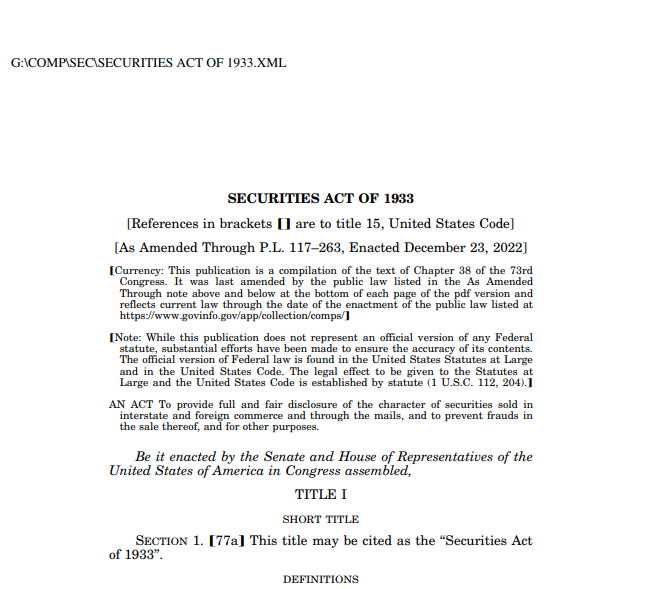The earth is the LORD’s, and all it contains, The world, and those who live in it. For He has founded it upon the seas And established it upon the rivers. Who may ascend onto the hill of the LORD? And who may stand in His holy place? One who has clean hands and a pure heart, Who has not lifted up his soul to deceit And has not sworn deceitfully. He will receive a blessing from the LORD And righteousness from the God of his salvation. This is the generation of those who seek Him, Who seek Your face–even Jacob.
Selah
Lift up your heads, you gates, And be lifted up, you ancient doors, That the King of glory may come in! Who is the King of glory? The LORD strong and mighty, The LORD mighty in battle. Lift up your heads, you gates, And lift them up, you ancient doors, That the King of glory may come in! Who is this King of glory? The Lord of armies, He is the King of glory.
Selah
Sources:
(1) Achievable Study Resources
(2) https://www.sec.gov/about
(3) https://www.sec.gov/about/mission
(4) https://www.investor.gov/introduction-investing/investing-basics/role-sec/laws-govern-securities-industry
(5) https://www.govinfo.gov/content/pkg/COMPS-1884/pdf/COMPS-1884.pdf
(6) https://www.law.cornell.edu/wex/securities_act_of_1933
(7) https://www.sec.gov/divisions/enforce/enforceactions.shtml
(8) https://guides.brooklaw.edu/FederalSecuritiesLaw/Statutes
(9) https://www.govinfo.gov/app/collection/uscode
(10) https://corporatefinanceinstitute.com/resources/equities/1933-securities-act-truth-securities/
(11)

Who Is The SEC?
The Securities and Exchange Commission (SEC) is an independent agency acting as a regulator overseeing the equity securities markets which trade more than $100 trillion annually.
The mission of the SEC is to: protect investors; maintain fair, orderly, and efficient markets; and facilitate capital formation.
The SEC was created by Congress with the Securities Exchange Act of 1934.
President Franklin D. Roosevelt believed that the creation of the SEC would become an efficient response to the fraud & deceit investors faced during the period around the Great Depression.
The Securities Exchange Act of 1934 empowered the SEC with broad authority to regulate the securities industry. An important aspect of this act is the requirement of certain periodic reporting by companies that publicly trade securities.
Here is a list of SEC enforcement actions. Additional Federal securities laws are codified in Title 15 [Commerce & Trade] of the U.S.C. (United States Code).
Other important laws regarding securities: Trust Indenture Act of 1939, Investment Company Act of 1940, Investment Advisors Act of 1940, Securities Investor Protection Act of 1970, Sarbanes-Oxley Act of 2002, Dodd-Frank Wall Street Reform and Consumer Protection Act of 2010, and the Jumpstart Our Business Startups Act.
The Securities Act of 1933

“Truth In Securities”
Additional Names:
Additional names for The Securities Act of 1933 include: Truth in Securities Act, Federal Securities Act, and the 1933 Act.
The Securities Act of 1933, which oversees the primary market, has two basic objectives: (1) to “require that investors receive financial and other significant information concerning securities being offered for public sale; and” (2) “prohibit deceit, misrepresentations, and other fraud in the sale of securities.”
Additionally, the Securities Act of 1933 works alongside existing state laws by adding federal requirements of disclosure discussed below:
The Securities Act of 1933 helps the SEC achieve these federally required disclosure goals by requiring certain securities to be formally registered before they can be issued within the primary market.
This registration process provides important material financial information to investors: (1) “a description of the company’s properties and business;” (2) “a description of the security to be offered for sale;” (3) “information about the management of the company; and” (4) “financial statements certified by independent accountants.”
Statements related to the registration process, like a company’s prospectus are found on the EDGAR database if the company filing is a U.S. domestic company.

Investors can utilize the information found in EDGAR to make informed judgments about the company’s securities. The SEC requires the information provided within to be accurate, but the SEC cannot guarantee the information filed is actually accurate. The SEC does ensure that any required information is provided without glaring deficiencies or omissions.
Companies can mislead, though they are not legally allowed to. According to Cornell Law School, “issuers are strictly liable for any material misstatements or omissions in the prospectus or registration statement.” Prosecution, injunctions, cease & desist orders, civil penalities can be brought from the SEC against violators.

Leave a Reply